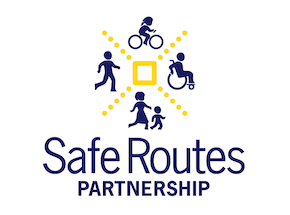Resource Library
This report summarized findings and lessons learned to increase proper bicycle helmet use among middle school students, based on an 8 week peer-based program.
This brief video illustrates the importance of addressing liability concerns in order for broader implementation of shared use agreement in the state of Ohio.
Key takeaway:
- State legislation with clear liability protection for schools that offer recreational facilities for community use (“shared use”) can reduce school administrators’ liability concerns and encourage public access to facilities for physical activity and recreation.
An “open use policy” allows school districts and others to formally grant community access to their facilities and set forth the roles, rights, and responsibilities of all involved.
Background: This study compared the two-year change in physical activity among 10-11 year-old children attending schools with and without health promotion programs by activity level, body weight status, and socioeconomic backgrounds to assess whether health promotion programs reduce or exacerbate health inequalities.
Communities across the country suffer from insufficient physical activity and a lack of access to physical activity opportunities. Shared use can be a simple solution to increase physical activity in Asian American, Native Hawaiian, and Pacific Islander communities.
Communities with limited access to public recreational space are exploring opportunities to develop partnerships with schools for the use of school property to promote physical activity in the community.
Student transportation departments have the potential to focus on more than just busing students to school.
This webinar is part two of a two-part series that will explore in depth tried and true methods for working with volunteers in Safe Routes to School programs, as well as other school and community-based volunteer initiatives.
While it may seem obvious that shifting trips from vehicles to active modes like walking and bicycling will reduce greenhouse gas emissions (GHG), it has historically been difficult to quantify the benefits that active transportation improvements will have.
- Objective: Long, uninterrupted bouts of sedentary behavior are thought to negatively influence postprandial glucose and insulin concentrations. We examined the effects of a 1-h bout of morning exercise versus intermittent walking bouts of short duration on glucose excursions and insulin secretion over 12-h.
Recent reports suggest that the rapid growth in youth obesity seen in the 1980s and 1990s has plateaued.
Background: This study investigated the association between the different types of behavior regulation and competence on sport and physical activity (PA) and perceived health, and the influence of school year level (ie, year 7 and year 11) and setting (ie, metropolitan and rural) on these relationships.
Principals are responsible for supporting the academic success of their students and also for acting as a liaison to parents and the community. Principals can play a key role in championing shared use in their school systems.
BACKGROUND: There is evidence that the presence of a friend increases physical activity behavior in school-aged children (≥ 8 years old) and in young adolescents. Little is known about the developmental trajectory of the effects of peer influences on children's physical activity.
OBJECTIVES: Understanding correlates of physical activity and sedentary behaviors may contribute to fostering active lifestyles. This study aimed to identify correlates of physical activity and sedentary behaviors in leisure-time among Portuguese urban children, during school days.
More than one-third of adults and 17% of youth in the United States are obese, although the prevalence remained stable between 2003-2004 and 2009-2010.
Many local communities are eager to use transportation funding streams to create safe streets for people walking and bicycling.
School boards have a crucial role to play in supporting shared use in school districts. This two page brief includes suggestions for shared use advocates working with school boards to advance shared use.

